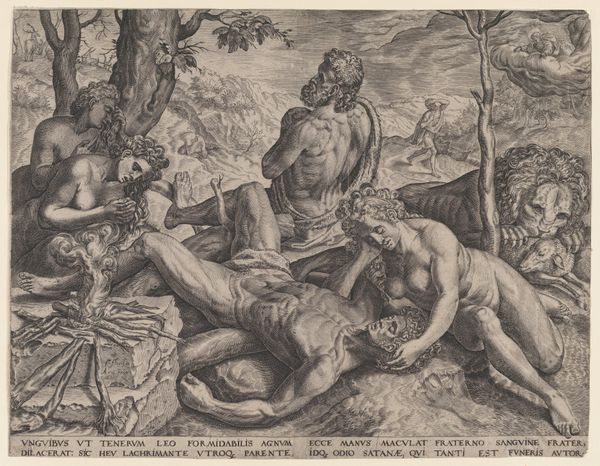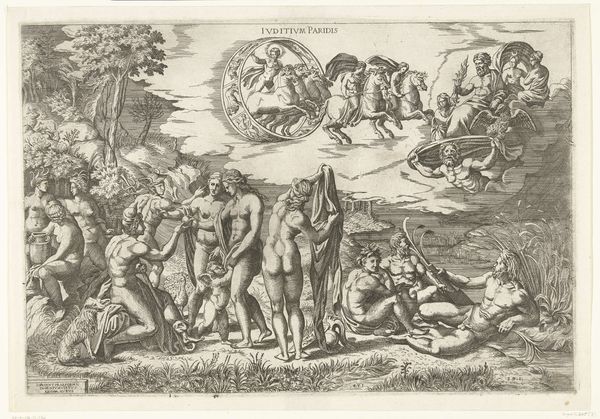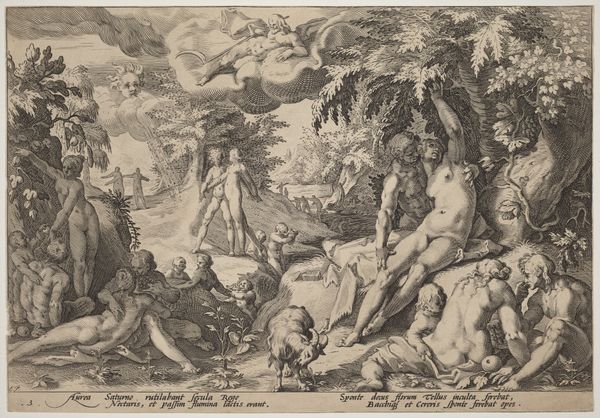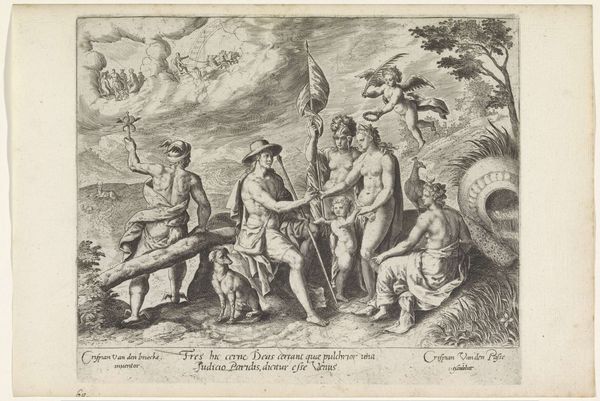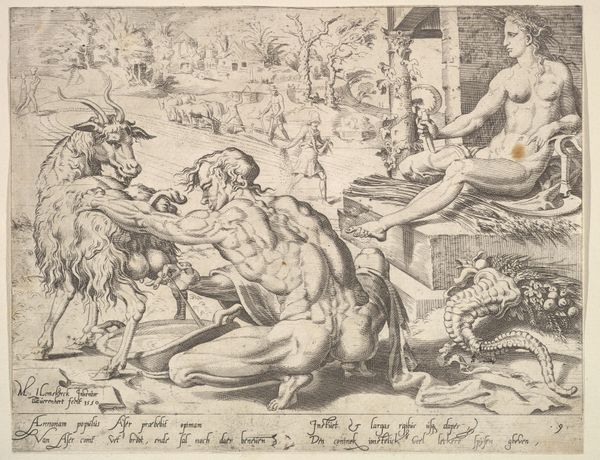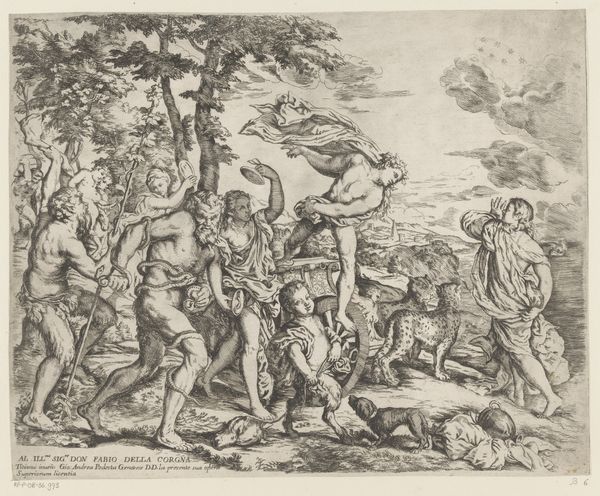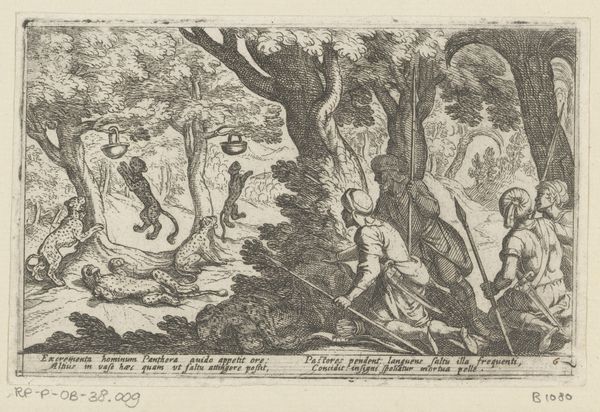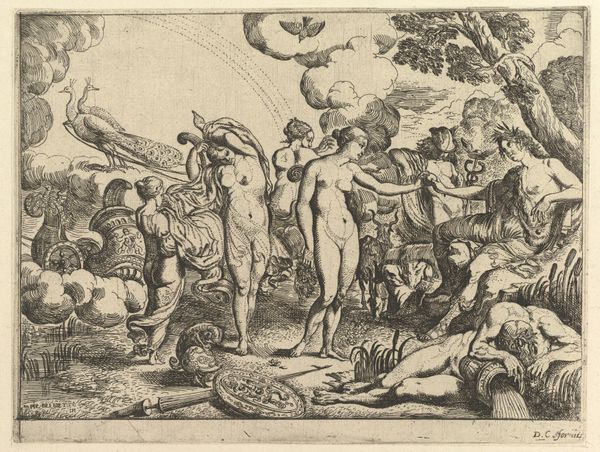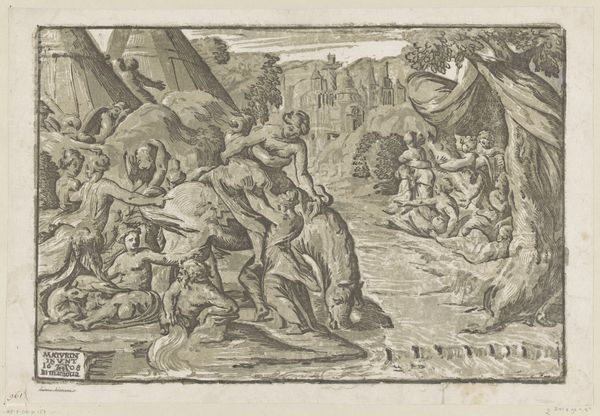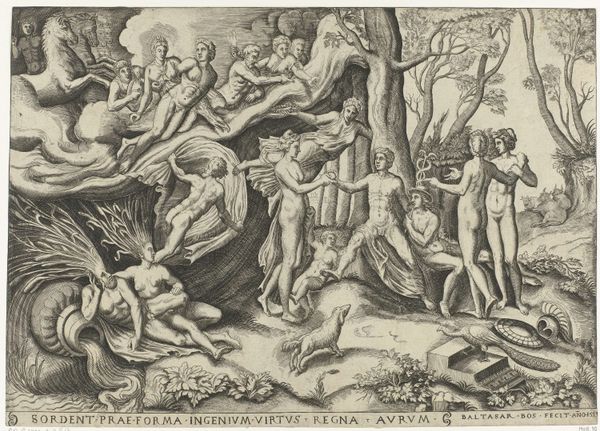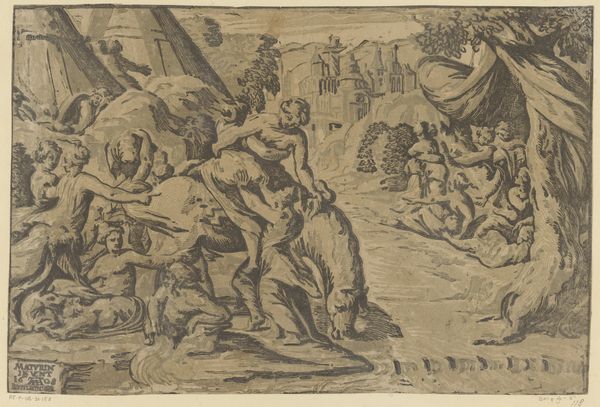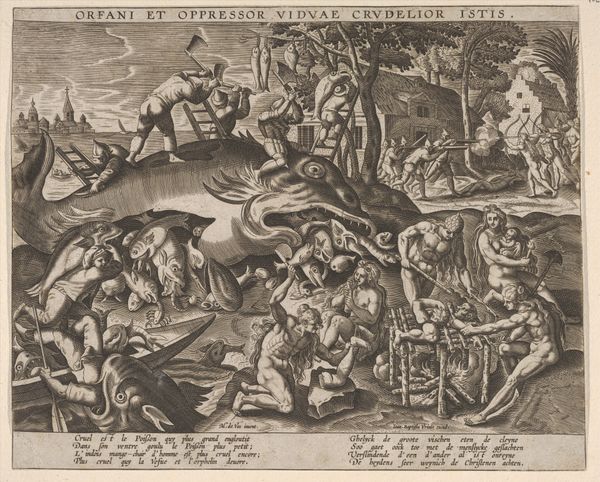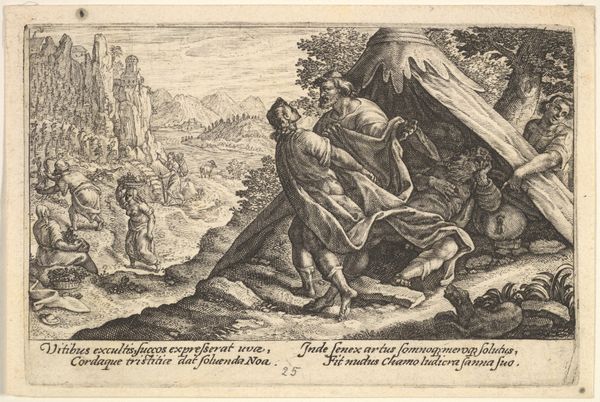
The beginning of the Flood: men and women climb to higher ground at right, water overtaking animals and people at left, Noah's Ark beyond, from "Liber Genesis" 1612
0:00
0:00
drawing, print, engraving
#
drawing
#
narrative-art
#
baroque
# print
#
landscape
#
figuration
#
history-painting
#
engraving
Dimensions: Sheet: 3 7/16 x 5 3/8 in. (8.8 x 13.7 cm) Plate: 3 1/4 x 5 3/16 in. (8.2 x 13.2 cm)
Copyright: Public Domain
Curator: This is a print entitled "The beginning of the Flood," dating from 1612, and created by Crispijn de Passe the Elder. It's currently part of the collection at the Metropolitan Museum of Art. The engraving captures the dramatic scene from the Book of Genesis. Editor: It's certainly dramatic, overwhelming even! The composition is really split, isn't it? We've got chaos on one side with this rising water and figures desperately clinging to each other, and this strange serenity on the other side with the family group, almost posed on the hill. It’s got a strange mix of terror and calm. Curator: Yes, and that dichotomy is quite intentional. Look at how de Passe utilizes engraving to convey both the immediate chaos and the looming divine judgment. The swirling water is rendered with very dense lines while the relatively spared family on the hill occupies a calmer part of the pictorial space. I'm also drawn to consider how the print medium allowed for widespread distribution of these religious narratives to be disseminated among various social strata during the period. Editor: I wonder if he considered the distribution so much as he considered just *telling* the story. It's interesting, all that detail. All the tiny etched lines of rain are converging in this radiant divine presence…almost suffocating everyone equally, yet the elite in that ark are saved! I cannot unsee the blatant statement about hierarchy even in death! Curator: Indeed! And we must consider who were buying these prints, who consumed them, how it resonated. It's possible the artist also wanted to highlight faith versus human fallibility? The frantic grasping of those in the flood is contrasted to the posture of trust of the chosen family. Editor: That is interesting, because the family seem oddly passive while the ones drowning show much passion… perhaps the artist himself, with that careful line work, hoped that the viewers, like the chosen ones, must embrace the quiet hand and artistry against emotional reactions…or perhaps it’s just beautiful Baroque doom. Curator: So, when we think about Crispijn de Passe, it's important to really reflect not just on the technical mastery of this engraving but to consider how a singular artwork acted as a commodity while also potentially commenting on religious and social hierarchies. Editor: True! Thinking about it now… it does become an almost subversive little apocalypse printed in my head, with class and power being questioned—or validated! Now, that is what great art is, isn’t it? To let a story live long beyond the initial intent.
Comments
No comments
Be the first to comment and join the conversation on the ultimate creative platform.

